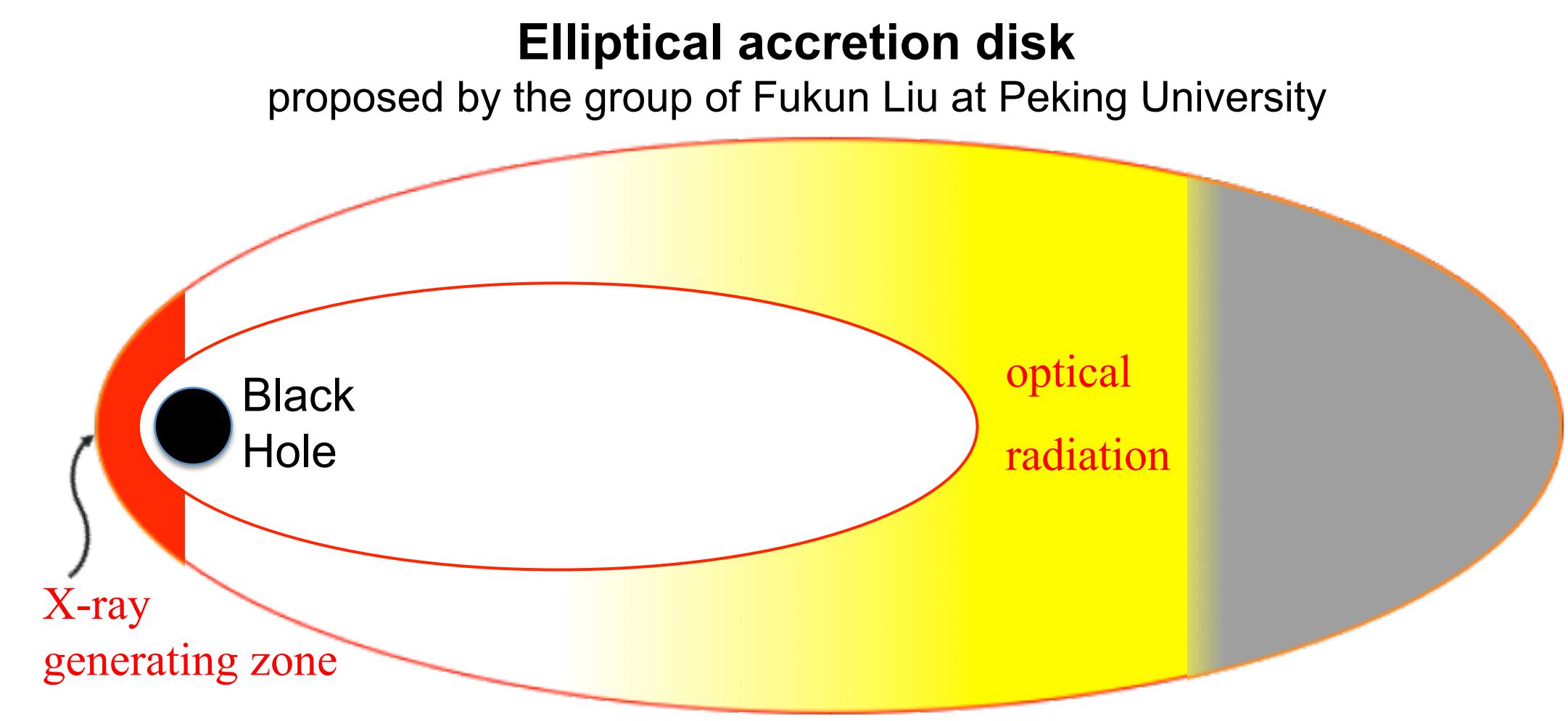When a star passing closely enough by a supermassive black hole is disrupted by tidal forces, the stellar debris falls onto the black hole triggering a tidal disruption event (TDE). It is commonly assumed that the accretion disk that forms circularizes efficiently, because of the relativistic apsidal precession and interactions between the crossing streams of matter. This picture is challenged by observations of the optical/UV spectra and the total bolometric output of the TDEs. If the circularization is inefficient, which is suggested by some numerical simulations, such low angular momentum accretion flow should result in a formation of an elliptical accretion disk. Such a model, with radiation originating from the shocks at the self-intersection of streams and being called self-crossing shock model in the community, was proposed by Tsvi Piran and colleagues.
In the current paper, a physically different model of an elliptical TDE accretion disk (see figure), originating from the Beijing group of Fukun Liu at The Department of Astronomy and The Kavli Institute for Astronomy and Astrophysics of Peking University, is discussed. In this case the energy dissipation occurs mainly in the accretion disk near the pericenter of the flow. The elliptical accretion disk of Beijing group has the properties of dynamics and thermal emission that are distinctively different from those of both the classic circular accretion disk and the self-crossing shock model and well consistent with the observations of the optical/UV TDEs. Professor Fukun Liu is the leading author of the work. The PhD students Chunyang Cao, Rong Cao and Zhiqin Zhou from the research group of Fukun Liu, Professor Marek Abramowicz at the Nicolaus Copernicus Astronomical Center, and Doctor Maciek Wielgus at the Black Hole Initiative of Harvard University, contributed together to this research.

A standard circular accretion disk is commonly referred to as a “Polish doughnut” (a name coined by sir Martin Rees, who is also one of the fathers of the classic theory of TDEs). To highlight the geometric difference of the elliptical disk, while remaining in the pastry-inspired namespace, Piran coined a name “Jerusalem bagel” (see figure). To stress similarities and differences, the accretion disks described in this paper are referred to as "Jerusalem bagels from Beijing". It is worth noticing that the geometry of an actual Polish doughnut corresponds to a spherical geometry of Bondi accretion.

The paper, accepted for publication in the Astrophysical Journal, can be found at https://arxiv.org/abs/2012.05552